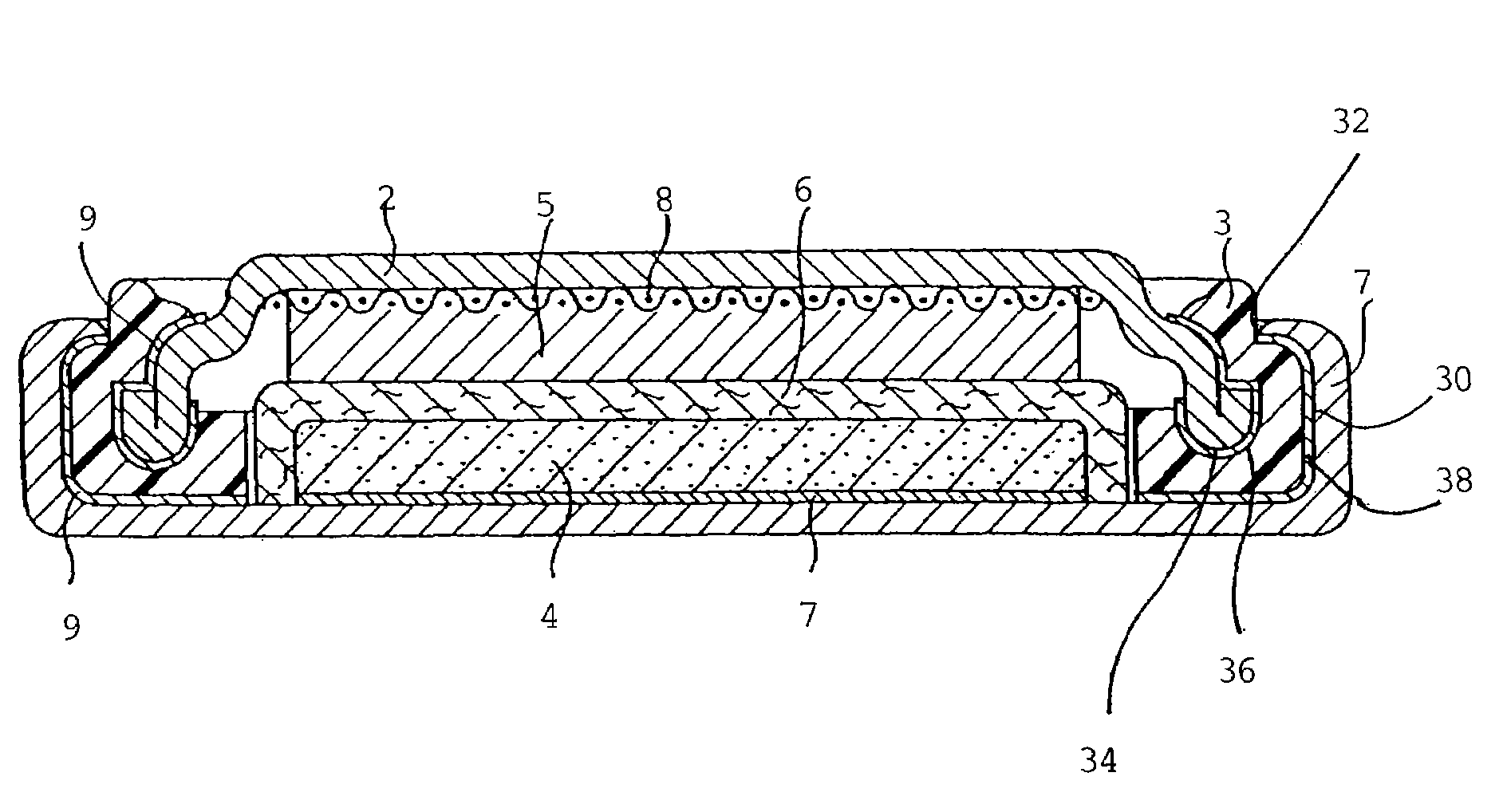Electrochemical element
a technology of electrochemical elements and elements, applied in the field of electrochemical elements, can solve the problems of performance degradation, difficult to make electrochemical elements correspond to high-temperature reflow, and extremely high thermal stress, and achieve the effect of improving the recognition accuracy of the applied state, i.e., the applied position and the film thickness, and high degree of freedom
- Summary
- Abstract
- Description
- Claims
- Application Information
AI Technical Summary
Benefits of technology
Problems solved by technology
Method used
Image
Examples
example 1
[0051]A battery having the structure of FIG. 1, using poly(phenylene sulfide) for the gasket 3 and the separator 6, was fabricated.
[0052]For the sealant, a butyl rubber was used as the elastomer, and phthalocyanine blue was used as the organic pigment. A solution was prepared by dissolving a mass of butyl rubber in toluene, and a fine powder of phthalocyanine blue was added to this. The solution of the sealant thus prepared was applied to predetermined positions of the gasket 3 and case 1. This application was executed manually, and further the applied condition was confirmed by visual observation. After the application of the sealant, by evaporating the toluene, a butyl rubber film containing the organic pigment was formed. The percentage of the butyl rubber and pigment in the solution for coating was 5% by weight, and the component ratio of the butyl rubber and the organic pigment was 40 parts by weight of the pigment based on 60 parts by weight of the butyl rubber.
[0053]With the ...
example 2
[0054]Except that lake red was used in place of phthalocyanine blue as the organic pigment of the battery A, a battery B having the same structure as the battery A was fabricated.
example 3
[0055]Except that green gold was used as an organic pigment in place of phthalocyanine blue as the organic pigment of the battery A, a battery C having the same structure as the battery A was fabricated.
PUM
| Property | Measurement | Unit |
|---|---|---|
| temperature | aaaaa | aaaaa |
| specific gravity | aaaaa | aaaaa |
| thickness | aaaaa | aaaaa |
Abstract
Description
Claims
Application Information
 Login to View More
Login to View More - R&D
- Intellectual Property
- Life Sciences
- Materials
- Tech Scout
- Unparalleled Data Quality
- Higher Quality Content
- 60% Fewer Hallucinations
Browse by: Latest US Patents, China's latest patents, Technical Efficacy Thesaurus, Application Domain, Technology Topic, Popular Technical Reports.
© 2025 PatSnap. All rights reserved.Legal|Privacy policy|Modern Slavery Act Transparency Statement|Sitemap|About US| Contact US: help@patsnap.com



